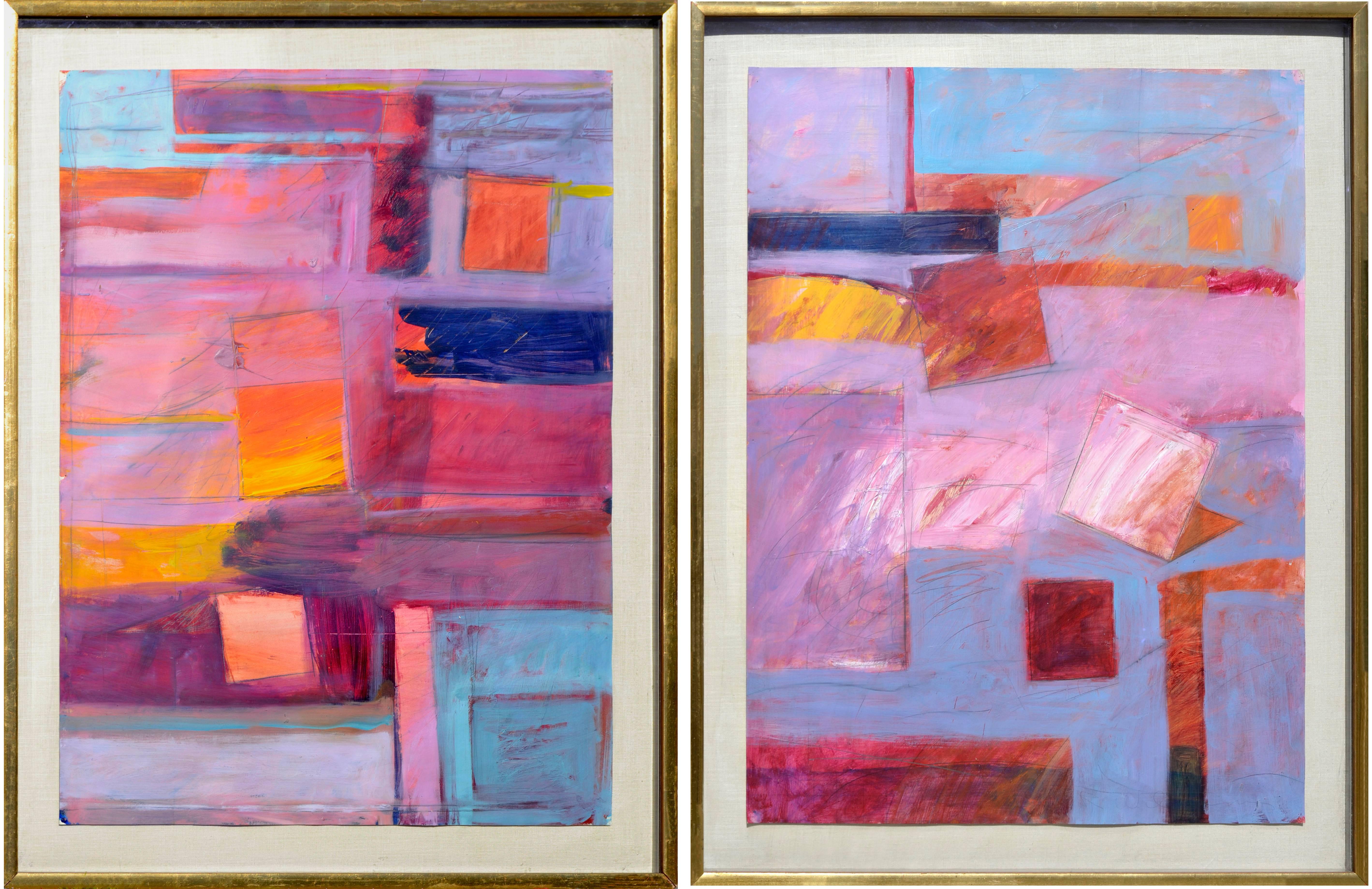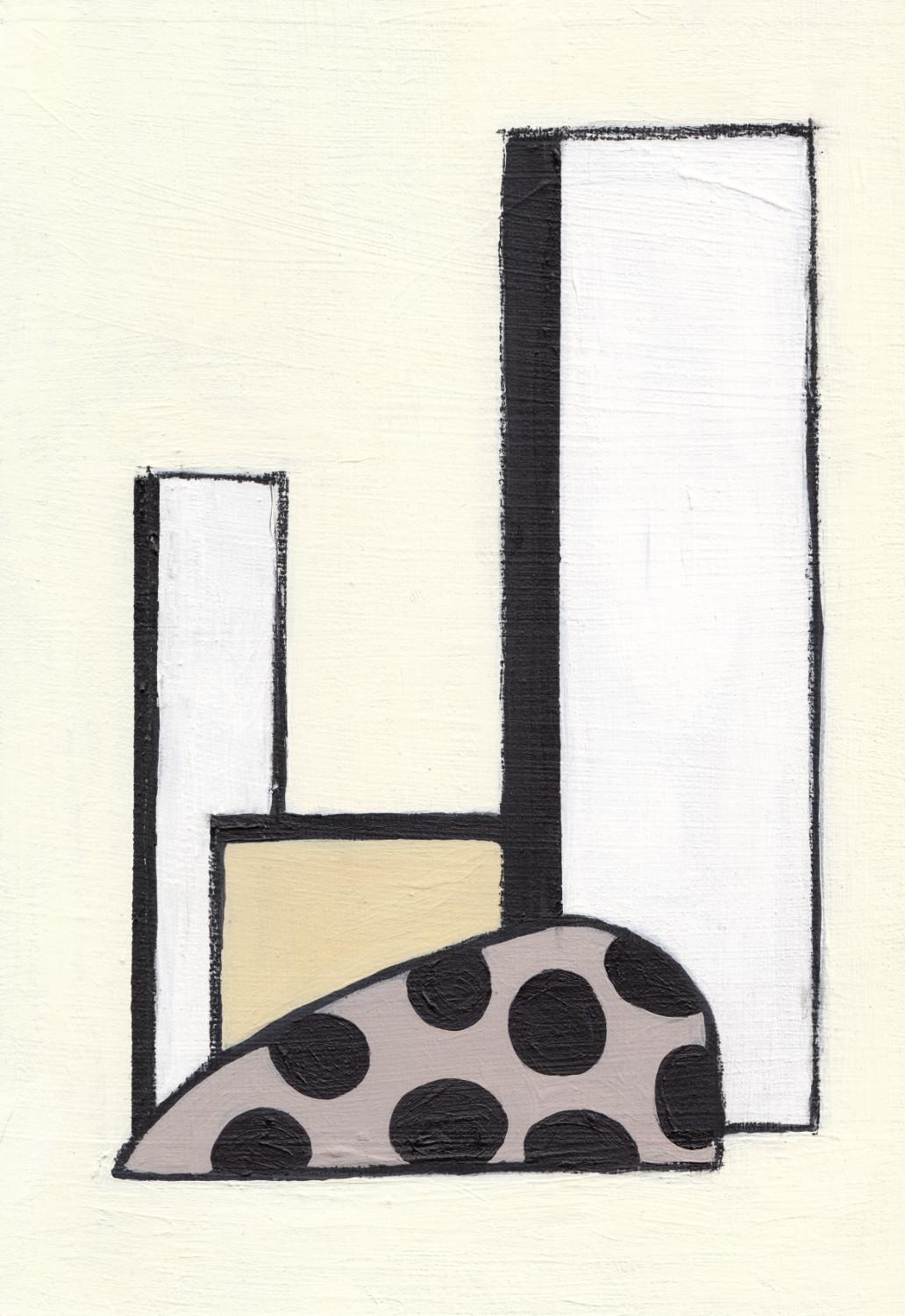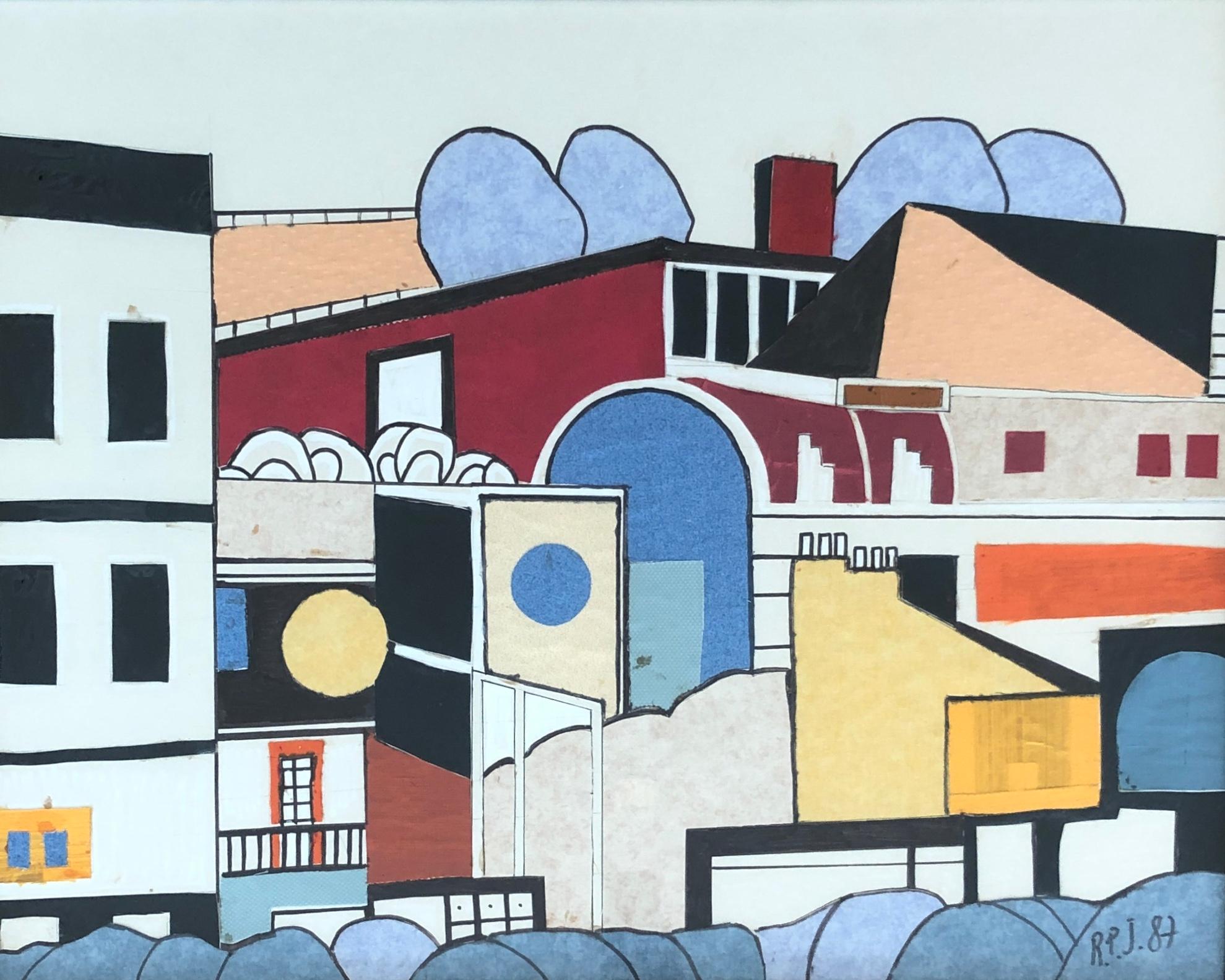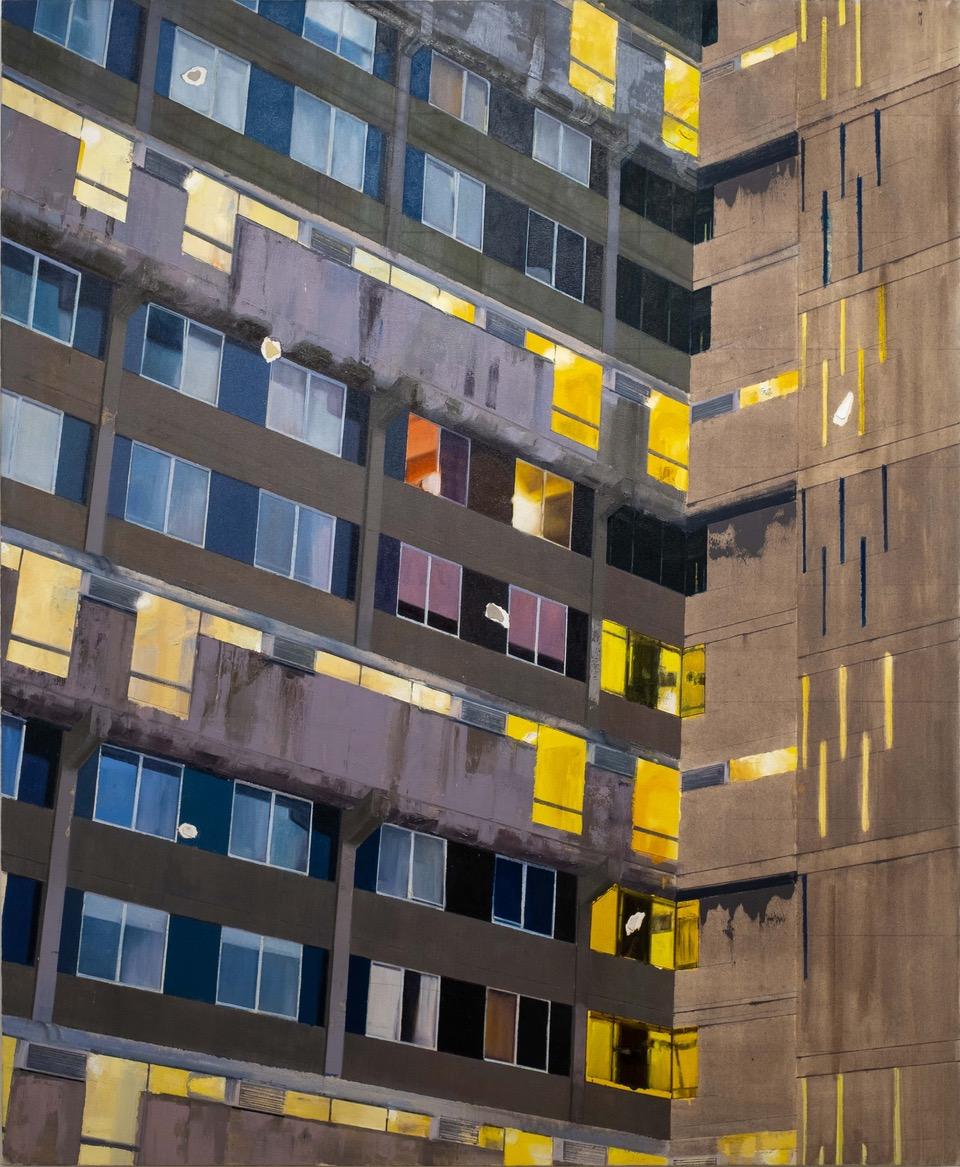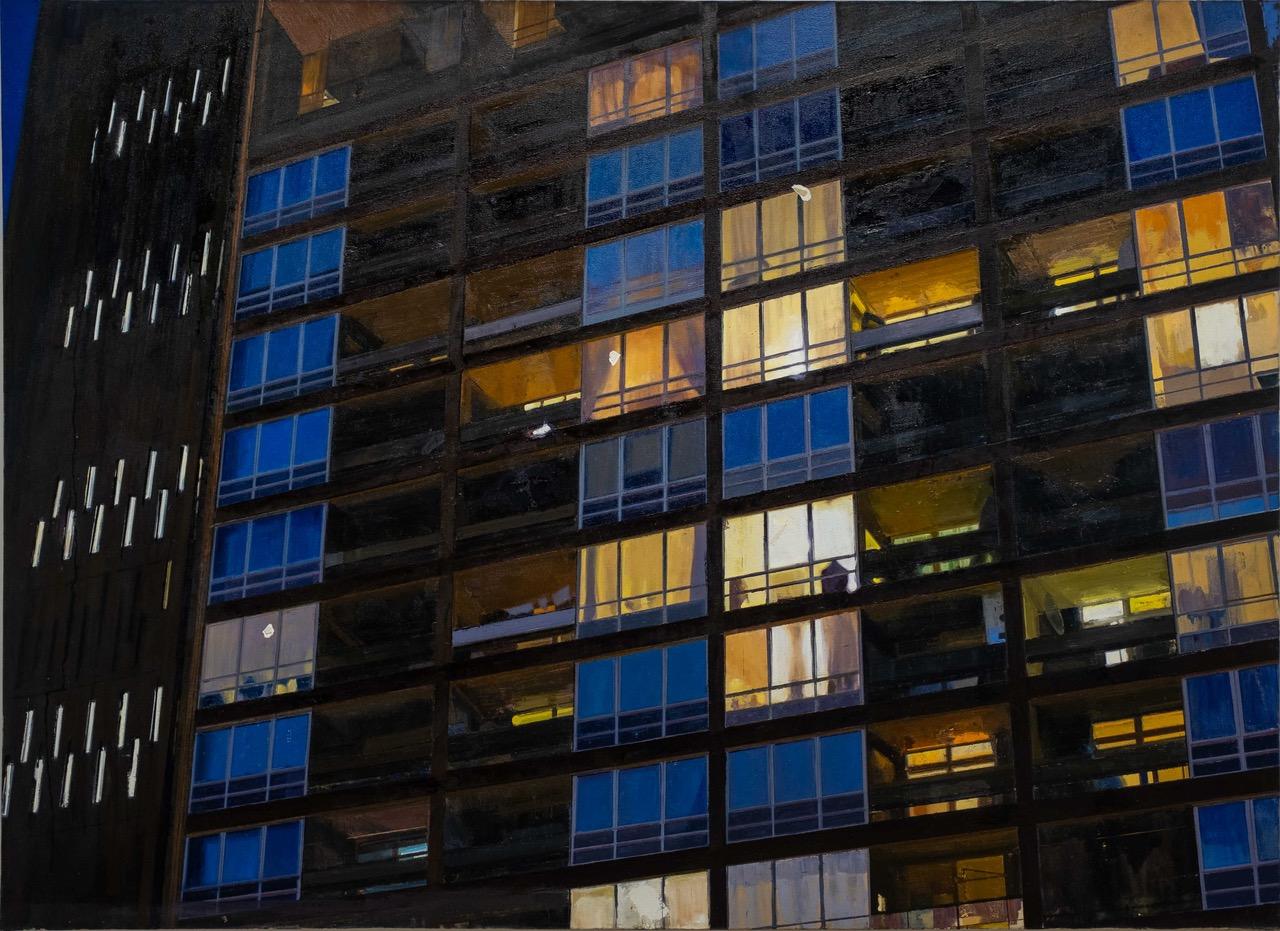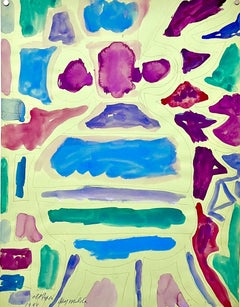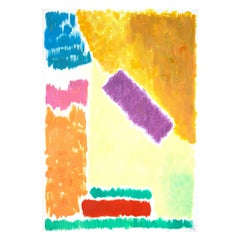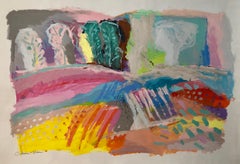
Large Original Abstract Colorful Painting Israeli Kibbutz Landscape
View Similar Items
Want more images or videos?
Request additional images or videos from the seller
1 of 9
Calman ShemiLarge Original Abstract Colorful Painting Israeli Kibbutz Landscape
About the Item
- Creator:Calman Shemi (1939, Argentinian)
- Dimensions:Height: 42 in (106.68 cm)Width: 29.5 in (74.93 cm)
- Medium:
- Movement & Style:
- Period:
- Condition:good, some skinning to back of paper, no loss or damage to the front.
- Gallery Location:Surfside, FL
- Reference Number:1stDibs: LU3823564081
About the Seller
4.9
Platinum Seller
These expertly vetted sellers are 1stDibs' most experienced sellers and are rated highest by our customers.
Established in 1995
1stDibs seller since 2014
1,543 sales on 1stDibs
Typical response time: 1 hour
More From This SellerView All
- Large Original Abstract Colorful Oil Painting Israeli Kibbutz Landscape ShemiBy Calman ShemiLocated in Surfside, FLLife in Nature Canvas measures 31.5 X 39.5 (I believe this is oil it might also be acrylic.) Hand signed recto and signed and titled verso. Calman Shemi, sculptor and painter, was born in Argentina in 1939. A graduate of the School of Sculpture and Ceramics in Mendoza, he studied under the Italian-Argentinean sculptor Libero Badii whom he credits with putting him on the right path. “He taught me principals, not only related to sculpture, but human and philosophic principals. Shemi also carefully studied the work of such masters as Picasso, Caravaggio, Frank Stella and Matisse. “From each one of these great artists I learned something from observing them,” he says. In 1961, at the age of 20, Shemi immigrated to Israel and joined Kibbutz Carmia of which he was a member for twenty years. There he worked in agriculture and also as a sculptor working with wood and clay. Several of his large-scale fiberglass and polyester projects are situated in public buildings. He was a student of German-Israeli sculptor Rudi Lehmann, a pioneer of the artistic movement known as “Canaanism.” Canaanite art was an effort to create a direct relationship with the land, bypassing historic Jewish connotations—hence the land’s primordial name is used. Canaanite works, with an emphasis on the inter-action of simple shapes, bear a deliberate resemblance to the sculpture and ritual art of early civilizations of the Middle East prior to Judaism, always with an eye to the fusion of man and the land itself. Though sculpture dominated his early years as an artist, in the mid ’70s Shemi developed the idea of the “soft painting” medium. Beginning with a color drawing done to scale, Shemi layers onto the drawing irregularly shaped pieces of variously textured and colored fabrics. Using a threadless 9,000-needle sewing machine, the fabrics are meshed to one another and to the background, resulting in vibrant carpet tapestry compositions infused with exuberant color and explosive movement. These are neither aubusson nor pile but more of a felt wall hanging...Category
1980s Abstract Geometric Abstract Paintings
MaterialsCanvas, Oil
- Large Modernist Abstract Expressionist Watercolor Painting Bauhaus Weimar ArtistBy Pawel KontnyLocated in Surfside, FLAbstract watercolor composition bearing the influence of the earlier color-block compositions of Paul Klee. Pawel August Kontny, (Polish-German-American artist) He was born in Laurahuette, Poland, in 1923, the son of a wealthy pastry shop owner. In 1939 he began studying architecture in Breslau where he was introduced to the European masters and to the work of some of the German Expressionists, soon afterward banned as "degenerate artists" and removed from museums throughout Germany by the Nazi regime. His studies were interrupted by World War II. Drafted into the German army, traveling in many countries as a soldier, he sketched various landscapes but in 1945, he was captured and held as a prisoner of war in Italy. After the war, he studied at the Union of Nuremberg Architects to help design buildings to replace ones destroyed in the war. He recorded his impressions of the local population and the landscapes through his watercolors and drawings. Pawel Kontny thereafter moved to Nuremberg, Germany, becoming a member of the Union of Nuremberg Architects and helping to rebuild the city's historic center. He soon decided to concentrate on his professional art career. He married Irmgard Laurer, a dancer with the Nuremberg Opera. Pavel Kontny 's career as an artist was launched with his participation in an all German exhibition, held at the Dusseldorf Museum in 1952. He held one-man shows in Germany, Switzerland and the United States. During his trip to the United States in 1960, Kontny became instantly enamored with Colorado, and decided to relocate to Cherry Hills with his wife and two children. He quickly established himself in the local art community, being affiliated for a time with Denver Art Galleries and Saks Galleries. His subject matter became the Southwest. During this time he received the Prestigious Gold Medal of the Art Academy of Rome. His extensive travel provided material for the paintings he did using his hallmark marble dust technique. he also worked equally in pastel, watercolor, charcoal and pencil-and-ink. in a style which merged abstraction and realist styles, influenced by Abstract Expressionist painting and South Western American landscapes. In the early 1960s he was one of only a few European-born professional artists in the state, a select group that included Herbert Bayer (1900-1985), a member of the prewar Bauhaus in Weimar and Dessau, Germany, and Roland Detre (1903-2001), a Hungarian modernist painter. As a Denver, Colorado resident, Pavel Kontny exhibited at galleries and museums throughout the United States, Germany and Japan. There, he was inspired by frequent trips to Native American pueblos in the Southwest, as well as by the study of the Plains Indians of Montana and Wyoming. Over the years Kontny had a number of students and generously helped young artist by hosting exhibitions at his Cherry Hills home. For many years he generously donated his paintings to support charitable causes in Denver. Influences during his European years included German pastelist C.O. Muller, German Informel painter Karl Dahmen and Swiss artist, Hans Erni. In the early 1950s his painting style showed the influence of the Die Brücke (The Bridge), a group of German expressionist artists formed in Dresden in 1905 who had a major impact on the evolution of modern art in the twentieth century in Germany. By the middle of the decade his style incorporated more referential abstraction and total abstraction, resulting in part from his study of Hans Hartung, a German artist based in Paris who exhibited his gestural abstract work in Germany. The American moon landing in 1969 inspired Paul Kontny...Category
Mid-20th Century Abstract Expressionist Landscape Paintings
MaterialsWatercolor, Archival Paper
- Abstract Expressionist Landscape Jay Milder Rhino Horn Painting American Pop ArtBy Jay MilderLocated in Surfside, FLThis came from the collection of the Horace Richter Gallery, Old jaffa, Israel These were done in the 1990's Hand signed and dated. titled Old Jaffa. Jay Milder (born 1934) is an American artist and a figurative expressionist painter of the second generation New York School. Old Testament themes such as Jacob's Ladder and Noah’s Ark, and the Jewish mystical beliefs of the Kabbalah, are recurring themes in Milder’s paintings which are presented as archetypal images that recur in the basic karma, make-up and need of human nature. Internationally exhibited, Milder is included in the collections of many national and international museums. He has been the subject of two, recent retrospectives in Brazil in 2007 at the National Museum Brasilia and, in 2006, at the Museum of Modern Art, in Rio de Janeiro. He is renowned in Sao Paulo, one of the major international centers for street and public art, as a seminal influence on graffiti artists. Jay Milder was born in Omaha, Nebraska, in 1934. His grandparents, who came from the Ukraine, were descendants of the Hasidic mystic, Rabbi Nachman. As he listened to family stories his interest in spiritualism and mysticism increased, and became an important influence on his philosophy of life and art. Later, when he arrived in New York, he was drawn to the Theosophical Society and the teaching of Helena Blavatsky. In 1954 Milder visited Europe where he studied painting with André L’Hote, and sculpture with Ossip Zadkine. He spent much time studying at the Louvre Museum, and at the studio of Stanley Hayter. During his Paris years the paintings of the Jewish painter Chaim Soutine, primarily influenced him. Milder returned to the United States in 1956, and he began studying painting at the Chicago Art Institute. He exhibited with the Momentum Group, an alliance of artists who were particularly dedicated to the progression of figurative art and its global origins. In 1957, Milder spent the summer in Mexico for a summer where he exhibited in Puebla. That year he received the Mexican Government’s Honor Award for artists. In the summer of 1958, Milder studied with Hans Hofmann in Provincetown, Massachusetts. He exhibited his work at the Sun Gallery, with his contemporaries, including Mary Frank, Red Grooms, Bob Thompson...Category
20th Century Abstract Expressionist Abstract Paintings
MaterialsPaper, Gouache
- Abstract Expressionist Landscape Jay Milder Rhino Horn Painting American Pop ArtBy Jay MilderLocated in Surfside, FLThis came from the collection of the Horace Richter Gallery These were done in the 1990's This does not appear to be hand signed. It is signed and dated verso perhaps by gallerist. Jay Milder (born 1934) is an American artist and a figurative expressionist painter of the second generation New York School. Old Testament themes such as Jacob's Ladder and Noah’s Ark, and the Jewish mystical beliefs of the Kabbalah, are recurring themes in Milder’s paintings which are presented as archetypal images that recur in the basic karma, make-up and need of human nature. Internationally exhibited, Milder is included in the collections of many national and international museums. He has been the subject of two, recent retrospectives in Brazil in 2007 at the National Museum Brasilia and, in 2006, at the Museum of Modern Art, in Rio de Janeiro. He is renowned in Sao Paulo, one of the major international centers for street and public art, as a seminal influence on graffiti artists. Jay Milder was born in Omaha, Nebraska, in 1934. His grandparents, who came from the Ukraine, were descendants of the Hasidic mystic, Rabbi Nachman. As he listened to family stories his interest in spiritualism and mysticism increased, and became an important influence on his philosophy of life and art. Later, when he arrived in New York, he was drawn to the Theosophical Society and the teaching of Helena Blavatsky. In 1954 Milder visited Europe where he studied painting with André L’Hote, and sculpture with Ossip Zadkine. He spent much time studying at the Louvre Museum, and at the studio of Stanley Hayter. During his Paris years the paintings of the Jewish painter Chaim Soutine, primarily influenced him. Milder returned to the United States in 1956, and he began studying painting at the Chicago Art Institute. He exhibited with the Momentum Group, an alliance of artists who were particularly dedicated to the progression of figurative art and its global origins. In 1957, Milder spent the summer in Mexico for a summer where he exhibited in Puebla. That year he received the Mexican Government’s Honor Award for artists. In the summer of 1958, Milder studied with Hans Hofmann in Provincetown, Massachusetts. He exhibited his work at the Sun Gallery, with his contemporaries, including Mary Frank, Red Grooms, Bob Thompson, Lester Johnson, Emilio Cruz and Alex Katz, among others. During this period his painting began to incorporate iconography of birds, animals, humans and animal/human hybrids. In 1958, Milder, Bob Thompson and Red Grooms, founded the City Gallery in the Chelsea section of New York City. The gallery moved downtown and became the Delancey Street Museum and an early site for ‘Happenings’,which Milder participated in. He showed his first major series called Subway Runners in 1960 at the Martha Jackson Gallery in New York City. Milder began a group of smaller paintings, entitled “Messiah Series”, in the late 1960s. These were fully expressionistic earth toned pictures, and he completed around 250 paintings in the series, based on biblical themes from the Old Testament. When 40 of these paintings were shown in a traveling exhibition premiering at the Richard Green Gallery in New York City, in 1987, art critic Donald Kuspit wrote in ArtForum Magazine: “after Nolde’s biblical pictures, these are the best and most integral group of biblical pictures in the 20th century.” During the 1970s, Milder co-founded a collective group called Rhino Horn with Peter Passuntino, Peter Dean, Benny Andrews, Nicholas Sperakis, Michael Fauerbach, Ken Bowman, Leonel Gongora, and Bill Barrell...Category
20th Century Abstract Expressionist Abstract Paintings
MaterialsPaper, Gouache
- Abstract Expressionist Landscape Jay Milder Rhino Horn Painting American Pop ArtBy Jay MilderLocated in Surfside, FLThis came from the collection of the Horace Richter Gallery, Old jaffa, Israel These were done in the 1990's Hand signed and dated. titled Old Jaffa. Jay Milder (born 1934) is an American artist and a figurative expressionist painter of the second generation New York School. Old Testament themes such as Jacob's Ladder and Noah’s Ark, and the Jewish mystical beliefs of the Kabbalah, are recurring themes in Milder’s paintings which are presented as archetypal images that recur in the basic karma, make-up and need of human nature. Internationally exhibited, Milder is included in the collections of many national and international museums. He has been the subject of two, recent retrospectives in Brazil in 2007 at the National Museum Brasilia and, in 2006, at the Museum of Modern Art, in Rio de Janeiro. He is renowned in Sao Paulo, one of the major international centers for street and public art, as a seminal influence on graffiti artists. Jay Milder was born in Omaha, Nebraska, in 1934. His grandparents, who came from the Ukraine, were descendants of the Hasidic mystic, Rabbi Nachman. As he listened to family stories his interest in spiritualism and mysticism increased, and became an important influence on his philosophy of life and art. Later, when he arrived in New York, he was drawn to the Theosophical Society and the teaching of Helena Blavatsky. In 1954 Milder visited Europe where he studied painting with André L’Hote, and sculpture with Ossip Zadkine. He spent much time studying at the Louvre Museum, and at the studio of Stanley Hayter. During his Paris years the paintings of the Jewish painter Chaim Soutine, primarily influenced him. Milder returned to the United States in 1956, and he began studying painting at the Chicago Art Institute. He exhibited with the Momentum Group, an alliance of artists who were particularly dedicated to the progression of figurative art and its global origins. In 1957, Milder spent the summer in Mexico for a summer where he exhibited in Puebla. That year he received the Mexican Government’s Honor Award for artists. In the summer of 1958, Milder studied with Hans Hofmann in Provincetown, Massachusetts. He exhibited his work at the Sun Gallery, with his contemporaries, including Mary Frank, Red Grooms, Bob Thompson...Category
20th Century Abstract Expressionist Abstract Paintings
MaterialsPaper, Gouache
- Abstract Israeli Landscape Jay Milder Rhino Horn Painting Jaffa, Israel Pop ArtBy Jay MilderLocated in Surfside, FLThis came from the collection of the Horace Richter Gallery These were done in the 1990's Hand signed and dated by the artist. Old Jaffa Jay Milder (born 1934) is an American artist and a figurative expressionist painter of the second generation New York School. Old Testament themes such as Jacob's Ladder and Noah’s Ark, and the Jewish mystical beliefs of the Kabbalah, are recurring themes in Milder’s paintings which are presented as archetypal images that recur in the basic karma, make-up and need of human nature. Internationally exhibited, Milder is included in the collections of many national and international museums. He has been the subject of two, recent retrospectives in Brazil in 2007 at the National Museum Brasilia and, in 2006, at the Museum of Modern Art, in Rio de Janeiro. He is renowned in Sao Paulo, one of the major international centers for street and public art, as a seminal influence on graffiti artists. Jay Milder was born in Omaha, Nebraska, in 1934. His grandparents, who came from the Ukraine, were descendants of the Hasidic mystic, Rabbi Nachman. As he listened to family stories his interest in spiritualism and mysticism increased, and became an important influence on his philosophy of life and art. Later, when he arrived in New York, he was drawn to the Theosophical Society and the teaching of Helena Blavatsky. In 1954 Milder visited Europe where he studied painting with André L’Hote, and sculpture with Ossip Zadkine. He spent much time studying at the Louvre Museum, and at the studio of Stanley Hayter. During his Paris years the paintings of the Jewish painter Chaim Soutine, primarily influenced him. Milder returned to the United States in 1956, and he began studying painting at the Chicago Art Institute. He exhibited with the Momentum Group, an alliance of artists who were particularly dedicated to the progression of figurative art and its global origins. In 1957, Milder spent the summer in Mexico for a summer where he exhibited in Puebla. That year he received the Mexican Government’s Honor Award for artists. In the summer of 1958, Milder studied with Hans Hofmann in Provincetown, Massachusetts. He exhibited his work at the Sun Gallery, with his contemporaries, including Mary Frank, Red Grooms, Bob Thompson...Category
20th Century Abstract Expressionist Abstract Paintings
MaterialsPaper, Gouache
You May Also Like
- Pastel Geometric Landscape in Vivid Tones, Yellow and Purple Impressionist FieldBy Natalia RomanLocated in Barcelona, ES"Pastel Geometric Landscape" is an abstract painting by Spanish artist Natalia Roman. It is a beautiful abstract architectural painting of unique blur...Category
2010s Abstract Geometric Abstract Paintings
MaterialsMixed Media, Oil, Acrylic, Watercolor, Archival Paper
- Turquoise Leaf Cutout on Abstract Cloudy Background, Organic Modern PaintingBy Kind of CyanLocated in Barcelona, ESThis is a unique mixed media piece: it is a hand-painted botanical abstract colorful shape upon a background that is a cyanotype print of a cloudy texture, giving it a modern, abstract geometric feel that will look great in contemporary and classic homes and businesses. Details: + Title: Turquoise Leaf...Category
2010s Abstract Geometric Landscape Paintings
MaterialsMonotype, Photogram, Other Medium, Emulsion, Sumi Ink, Acrylic, Archival...
- Two Sunset Geometric San Francisco Bay Area Abstracts - A pairLocated in Soquel, CAA pair of beautiful geometric abstracts with highly saturated color by San Francisco Bay area abstract expressionist R. Williams (American, 20th Cent...Category
1980s Abstract Geometric Abstract Paintings
MaterialsAcrylic, Archival Paper
- "Civic Study I" Acrylic & Charcoal Painting on Paper, neutral city architectureBy Amanda AndersenLocated in Hamburg, HHOne in a series of three small works created in 2021 with acrylic paint and charcoal on 270g archival quality paper. This abstract urban landscape painting was inspired by brutalist ...Category
2010s Abstract Geometric Abstract Paintings
MaterialsPaper, Acrylic, Charcoal
- "Civic Study II" Acrylic Charcoal Painting on Paper, neutral mauve cream beigeBy Amanda AndersenLocated in Hamburg, HHOne in a series of three small works created in 2021 with acrylic paint and charcoal on 270g archival quality paper. This abstract urban landscape painting was inspired by brutalist ...Category
2010s Abstract Geometric Abstract Paintings
MaterialsPaper, Charcoal, Acrylic
- "Civic Study III" Acrylic Charcoal Painting on Paper, neutral mauve cream beigeBy Amanda AndersenLocated in Hamburg, HHOne in a series of three small works created in 2021 with acrylic paint and charcoal on 270g archival quality paper. This abstract urban landscape painting was inspired by brutalist ...Category
2010s Abstract Geometric Abstract Paintings
MaterialsAcrylic, Paper, Charcoal
Recently Viewed
View AllMore Ways To Browse
Wall Sculpture 70s
70s Wall Sculpture
Retro Needle Work
Japan Paint Leaf Two Panel
Japanese Wood Bear
Retro Metal Leaf Wall Art
Fiberglass 70s
Painted Fabric Panels Japan
Frank Stella Artwork
Japan Early 20 The Century Silver
Mid Century Mesh Sculpture
Sewing Machine Metal
Jewish Carpet
Fiberglass Wall Panel
Earth Day
Contemporary Wall Hanging
Orange 22
Ny Post


